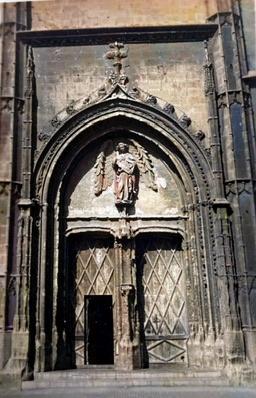How has the church’s neo-Gothic style influenced the architectural landscape of S'Horta village?
Similar Topics
neo-gothic church
s'horta village architecture
neo-gothic style influence
mediterranean architectural blend
pointed arches design
stained glass windows
architectural heritage tourism
stone carving craftsmanship
The church’s neo-Gothic style has had a subtle yet enduring influence on the architectural landscape of S'Horta village, blending historical reverence with local character. Erected during a period when neo-Gothic architecture was experiencing a revival, the church introduced distinctive elements such as pointed arches, intricate stained glass windows, and spire-like buttresses to the predominantly Mediterranean village. This style contrasts with the village’s originally simple, whitewashed stone houses but has gradually been embraced, adding a layer of visual complexity to the streetscape. The church stands as a focal point, drawing the eye upward with its vertical emphasis and detailed ornamentation, which enriches the village’s skyline and provides a striking counterbalance to the low, flat roofs of traditional local homes.
Beyond its aesthetic contributions, the neo-Gothic church has influenced local architectural tastes and construction methods in a more subtle manner. While most buildings in S'Horta remain modest and functional, there has been a discernible inspiration drawn from the church’s verticality and decorative stonework in newer structures and renovations. The emphasis on craftsmanship and detail that neo-Gothic architecture champions has encouraged local artisans to incorporate finer stone carving and more elaborate window designs in community buildings and private residences alike. This stylistic dialogue between the church and its surroundings fosters a unique architectural identity for the village—one that honors a historic European architectural movement while remaining grounded in its own Mediterranean context.
In essence, the neo-Gothic style of the church has enriched S'Horta’s architectural fabric without overwhelming its original charm. It serves not only as a place of worship but also as an enduring symbol of the village’s openness to artistic and cultural influences beyond its immediate environment. This blend of tradition and revival has helped S'Horta attract visitors who appreciate architectural heritage, thereby adding cultural value and a measure of timeless elegance to the village. Consequently, the neo-Gothic church remains a defining and inspirational element within S'Horta’s evolving architectural landscape.
Beyond its aesthetic contributions, the neo-Gothic church has influenced local architectural tastes and construction methods in a more subtle manner. While most buildings in S'Horta remain modest and functional, there has been a discernible inspiration drawn from the church’s verticality and decorative stonework in newer structures and renovations. The emphasis on craftsmanship and detail that neo-Gothic architecture champions has encouraged local artisans to incorporate finer stone carving and more elaborate window designs in community buildings and private residences alike. This stylistic dialogue between the church and its surroundings fosters a unique architectural identity for the village—one that honors a historic European architectural movement while remaining grounded in its own Mediterranean context.
In essence, the neo-Gothic style of the church has enriched S'Horta’s architectural fabric without overwhelming its original charm. It serves not only as a place of worship but also as an enduring symbol of the village’s openness to artistic and cultural influences beyond its immediate environment. This blend of tradition and revival has helped S'Horta attract visitors who appreciate architectural heritage, thereby adding cultural value and a measure of timeless elegance to the village. Consequently, the neo-Gothic church remains a defining and inspirational element within S'Horta’s evolving architectural landscape.
🧩 Related Questions
Related Question
How effective are water recycling initiatives in supplementing Mallorca's freshwater resources?
Related Question
What types of local ingredients are typically used in making traditional Mallorcan sopes?
Related Question
In what ways can the tranquility found in Mallorca's less inhabited areas promote spiritual growth for hermits?

